Among various environmental factors associated with triggering or exacerbating autoimmune response, an important role is played by infections. A breakdown of immune tolerance as a byproduct of immune response against these infections is one of the major causes of autoimmune disease. In this paper we analyse the dynamics of immune response with particular emphasis on the role of time delays characterising the infection and the immune response, as well as on interactions between different types of T cells and cytokines that mediate their behaviour. Stability analysis of the model provides insights into how different model parameters affect the dynamics. Numerical stability analysis and simulations are performed to identify basins of attraction of different dynamical states, and to illustrate the behaviour of the model in different regimes.
1.
Introduction
The notion of metric geometric mean (MGM for short) of positive definite matrices involves many mathematical areas, e.g. matrix/operator theory, geometry, and group theory. For any positive definite matrices A and B of the same size, the MGM of A and B is defined as
From algebraic viewpoint, A♯B is a unique positive solution of the Riccati equation (see [1, Ch. 4])
In fact, the explicit formula (1.1) and the equation (1.2) are two equivalent ways to describe the geometric mean; see [2]. From differential-geometry viewpoint, A♯B is a unique midpoint of the Riemannian geodesic interpolated from A to B, called the weighted geometric mean of A and B:
This midpoint is measured through a natural Riemannian metric; see a monograph [1, Ch. 6] or Section 2. The weighted MGMs (1.3) posses rich algebraic, order, and analytic properties, namely, positive homogeneity, congruent invariance, permutation invariance, self duality, monotonicity, and continuity from above; see [3, Sect. 3].
In operator-theoretic approach, the weighted MGMs (1.3) for positive operators on a Hilbert space are Kubo-Ando means [4] in the sense that they satisfy the monotonicity, transformer inequality, continuity from above, and normalization. More precisely, A♯tB is the Kubo-Ando mean associated with the operator monotone function f(x)=xt on the positive half-line, e.g. [3, Sect. 3]. The geometric mean serves as a tool for deriving matrix/operators inequalities; see the original idea in [5], see also [1, Ch. 4], [3, Sect. 3], and [6]. The cancellability of the weighted MGM together with spectral theory can be applied to solve operator mean equations; see [7]. Indeed, given two positive invertible operators A and B acting on the same Hilbert space (or positive definite matrices of the same dimension), the equation A♯tX=B is uniquely solvable in terms of the weighted MGM in which the weight can be any nonzero real number. See more development of geometric mean theory for matrices/operators in [8,9,10].
A series of Lawson and Lim works investigated the theory of (weighted) MGM in various frameworks. Indeed, the geometric mean (with weight 1/2) can be naturally defined on symmetric cones [11], symmetric sets [12], two-powered twisted subgroups [12,13], and Bruhat-Tits spaces [2]. The framework of reflection quasigroups (based on point-reflection geometry and quasigroup theory) [13] allows us to define weighted MGMs via geodesics, where the weights can be any dyadic rationals. On lineated symmetric spaces [14], the weights can be arbitrary real numbers, due to the density of the dyadic rationals on the real line. Their theory can be applied to solve certain symmetric word equations in two matrix letters; see [15]. Moreover, mean equations related MGMs were investigated in [13,16].
From the formulas (1.1) and (1.3), the matrix products are the usual products between matching-dimension matrices. We can extend the MGM theory by replacing the usual product to the semi-tensor product (STP) between square matrices of general dimension. The STP was introduced by Cheng [17], so that the STP reduces to the usual matrix product in matching-dimension case. The STP keeps various algebraic properties of the usual matrix product such as the distribution over the addition, the associativity, and compatibility with transposition, inversion and scalar multiplication. The STP is a useful tool when dealing with vectors and matrices in classical and fuzzy logic, lattices and universal algebra, and differential geometry; see [18,19]. The STPs turn out to have a variety of applications in other fields: networked evolutionary games [20], finite state machines [21], Boolean networks [19,22,23], physics [24], and engineering [25]. Many authors developed matrix equations based on STPs; e.g. Sylvester-type equations [26,27,28], and a quadratic equation A⋉X⋉X=B [29].
The present paper aims to develop further theory on weighted MGMs for positive definite matrices of arbitrary dimensions, where the matrix products are given by the STPs. In this case, the weights can be arbitrary real numbers; see Section 3. It turns out that this mean satisfies various properties as in the classical case. The most interesting case is when the weights belong to the unit interval. In this case, the weighted MGM satisfies the monotonicity, and the continuity from above. Then we investigate the theory when either A or B is not assumed to be invertible. In such case, the weights are restricted to be in [0,∞) or (−∞,1]. We also use a continuity argument to study the weighted MGMs, in which the weights belong to [0,1]. Moreover, we prove the cancellability of the weighted MGMs, and apply to solve certain nonlinear matrix equations concerning MGMs; see Section 4. In Section 5, we apply the theory to solve the Riccati equation and certain symmetric word equations in two matrix letters. Finally, we summarize the whole work in Section 6.
In the next section, we setup basic notation and provide preliminaries results on the Riemannian geometry of positive definite matrices, the tensor product, and the semi-tensor product.
2.
Preliminaries
Throughout, let Mm,n be the set of all m×n complex matrices, and abbreviate Mn,n to Mn. Define Cn=Mn,1, the set of n-dimensional complex vectors. Denote by AT and A∗ the transpose and conjugate transpose of a matrix A, respectively. The n×n identity matrix is denoted by In. The general linear group of n×n invertible complex matrices is denoted by GLn. The symbols Hn, and PSn stand for the vector space of n×n Hermitian matrices, and the cone of n×n positive semidefinite matrices, respectively. For a pair (A,B)∈Hn×Hn, the partial ordering A⩾B means that A−B lies in the positive cone PSn. In particular, A∈PSn if and only if A⩾0. Let us denote the set of n×n positive definite matrices by Pn. For each A∈Hn, the strict inequality A>0 indicates that A∈Pn.
A matrix pair (A,B)∈Mm,n×Mp,q is said to satisfy factor-dimension condition if n|p or p|n. In this case, we write A≻kB when n=kp, and A≺kB when p=kn.
2.1. Geometry of positive definite matrices
Recall that Mn is a Hilbert space endowed with the Hilbert-Schmidt inner product ⟨A,B⟩HS=trA∗B and the associated norm ‖A‖HS=(trA∗A)1/2. The subset Pn, which is an open subset in Hn, is a Riemannian manifold endowed with the trace Riemannian
If γ:[a,b]→Pn is a (piecewise) differentiable path in Pn, we define the length of γ by
For each X∈GLn, the congruence transformation
is bijective and the composition ΓX∘γ:[a,b]→Pn is another path in Pn. For any A,B∈Pn, the distance between A and B is given by
Lemma 2.1. (e.g. [1]). For each A, B\in \mathbb{P}_n , there is a unique geodesic from A to B , parametrized by
This geodesic is natural in the sense that \delta_{HS}(A, \gamma(t)) = t\delta_{HS}(A, B) for each t .
For any A, B\in \mathbb{P}_n , denote the geodesic from A to B by [A, B] .
2.2. Tensor and semi-tensor products of matrices
This subsection is a brief review on tensor products and semi-tensor products of matrices. Recall that for any matrices A = [a_{ij}] \in \mathbb{M}_{m, n} and B \in \mathbb{M}_{p, q} , their tensor product is defined by
The tensor operation (A, B)\mapsto A\otimes B is bilinear and associative.
Lemma 2.2 (e.g. [3]). Let (A, B)\in \mathbb{M}_{m, n}\times \mathbb{M}_{p, q} and (P, Q)\in \mathbb{M}_m\times \mathbb{M}_n . Then we have
(1). A\otimes B = 0 if and only if either A = 0 or B = 0 ;
(2). (A\otimes B)^* = A^*\otimes B^* ;
(3). if (P, Q)\in \mathbb{GL}_m\times \mathbb{GL}_n , then (P\otimes Q)^{-1} = P^{-1}\otimes Q^{-1} ;
(4). if (P, Q)\in \mathbb{PS}_m\times \mathbb{PS}_n , then P\otimes Q\in \mathbb{PS}_{mn} and (P\otimes Q)^{1/2} = P^{1/2}\otimes Q^{1/2} ;
(5). if (P, Q)\in \mathbb{P}_m\times \mathbb{P}_n , then P\otimes Q\in \mathbb{P}_{mn} ;
(6). \det(P\otimes Q) = (\det P)^n(\det Q)^m .
To define the semi-tensor product, first consider a pair (X, Y)\in \mathbb{M}_{1, m}\times \mathbb{C}^n of row and column vectors, respectively. If X\succ_kY , then we split X into X_1, X_2, \dots, X_n\in \mathbb{M}_{1, k} and define the STP of X and Y as
If X\prec_kY , then we split Y into Y^1, Y^2, \dots, Y^m\in \mathbb{C}^k and define the STP of X and Y as
In general, for a pair (A, B)\in \mathbb{M}_{m, n}\times \mathbb{M}_{p, q} satisfying the factor-dimensional condition, we define
where A_i is i -th row of A and B^j is the j -th column of B . More generally, for an arbitrary matrix pair (A, B)\in \mathbb{M}_{m, n}\times \mathbb{M}_{p, q} , we let \alpha = {\rm{lcm}}(n, p) and define
The operation (A, B)\mapsto A\ltimes B turns out to be bilinear, associative, and continuous.
Lemma 2.3 (e.g. [18]). Let (A, B)\in \mathbb{M}_{m, n}\times \mathbb{M}_{p, q} and (P, Q)\in \mathbb{M}_m\times \mathbb{M}_n . Then we have
(1). (A\ltimes B)^* = B^*\ltimes A^* ;
(2). if (P, Q)\in \mathbb{GL}_m\times \mathbb{GL}_n , then (P\ltimes Q)^{-1} = Q^{-1}\ltimes P^{-1} ;
(3). \det(P\ltimes Q) = (\det P)^{\alpha/m}(\det Q)^{\alpha/n} where \alpha = {\rm{lcm}}(m, n) .
Proposition 2.4. Let A\in \mathbb{M}_m, X\in \mathbb{M}_n and S, T\in \mathbb{H}_m .
(1). If A\geqslant 0 , then X^*\ltimes A\ltimes X \geqslant 0 .
(2). If S\geqslant T , then X^*\ltimes S\ltimes X \geqslant X^*\ltimes T\ltimes X .
(3). If A > 0 and X\in \mathbb{GL}_n , then X^*\ltimes A\ltimes X > 0 .
(4). If S > T , then X^*\ltimes S\ltimes X > X^*\ltimes T\ltimes X .
Proof. 1) Since (X^*\ltimes A\ltimes X)^* = X^*\ltimes A\ltimes X , we have that X^*\ltimes A\ltimes X is Hermitian. Let \alpha = {\rm{lcm}}(m, n) and u\in \mathbb{C}^\alpha . Set v = X\ltimes u . Using Lemma 2.2, we obtain that A\otimes I_{\alpha/p}\geqslant 0 and then, by Lemma 2.3,
This implies that X^*\ltimes A\ltimes X\geqslant 0 . 2) Since S\geqslant T , we have S-T \geqslant 0 . Applying the assertion 1, we get X^*\ltimes (S-T)\ltimes X\geqslant 0 , i.e., X^*\ltimes S\ltimes X \geqslant X^*\ltimes T\ltimes X . The proofs of the assertions 3)-4) are similar to the assertions 1)-2), respectively. □
3.
Weighted metric geometric means of positive (semi)definite matrices
We extend the classical weighted MGM (1.3) for a pair of positive definite matrices of different sizes as follows.
Definition 3.1. Let (A, B)\in \mathbb{P}_m\times \mathbb{P}_n . For any t\in \mathbb{R} , the t -weighted metric geometric mean (MGM) of A and B is defined by
where \alpha = {\rm{lcm}}(m, n) .
Note that when m = n , Eq (3.1) reduces to the classical one (1.3). In particular, A \, \sharp_0\, B = A\otimes I_{\alpha/m} , A \, \sharp_1\, B = B\otimes I_{\alpha/n} , A \, \sharp_{-1}\, B = A \ltimes B^{-1} \ltimes A , and A \, \sharp_2 \, B = B \ltimes A^{-1} \ltimes B . Fundamental properties of the weighted MGMs (3.1) are as follows.
Theorem 3.2. Let (A, B)\in \mathbb{P}_m\times \mathbb{P}_n . Let r, s, t\in \mathbb{R} and \alpha = {\rm{lcm}}(m, n) . Then
(1). Positivity: A\, \sharp_t\, B > 0 .
(2). Fixed-point property: A\, \sharp_t\, A = A .
(3). Positive homogeneity: c(A\, \sharp_t\, B) = (cA)\, \sharp_t\, (cB) for all c > 0 .
(4). Congruent invariance: C^* (A\, \sharp_t\, B) C = (C^*\ltimes A\ltimes C)\, \sharp_t\, (C^*\ltimes B\ltimes C) for all C\in \mathbb{GL}_{\alpha} .
(5). Self duality: (A\, \sharp_t\, B)^{-1} = A^{-1}\, \sharp_t\, B^{-1} .
(6). Permutation invariance: A\, \sharp_{1/2} \, B = B\, \sharp_{1/2}\, A . More generally, A\, \sharp_t\, B = B\, \sharp_{1-t}\, A .
(7). Affine change of parameters: (A\, \sharp_r\, B)\, \sharp_t\, (A\, \sharp_s\, B) = A \, \sharp_{(1-t)r+ts}\, B .
(8). Exponential law: A\, \sharp_r\, (A\, \sharp_s\, B) = A \, \sharp_{rs}\, B .
(9). C \, \sharp_{-1}\, (A \, \sharp_{t}\, B) = (C \, \sharp_{-1}\, A) \, \sharp_{t}\, (C \, \sharp_{-1}\, B) for any C \in \mathbb{P}_m .
(10). Left cancellability: Let Y_1, Y_2\in \mathbb{P}_n and t\in \mathbb{R}-\{0\} . Then the equation A\, \sharp_t\, Y_1 = A\, \sharp_t\, Y_2 implies Y_1 = Y_2 . In other words, for each t\neq 0 , the map X\mapsto A\, \sharp_t\, X is an injective map from \mathbb{P}_n to \mathbb{P}_\alpha .
(11). Right cancellability: Let X_1, X_2\in \mathbb{P}_m and t\in \mathbb{R}-\{1\} . Then the equation X_1\, \sharp_t\, B = X_2\, \sharp_t\, B implies X_1 = X_2 . In other words, for each t\neq 1 , the map X\mapsto X\, \sharp_t\, B is an injective map from \mathbb{P}_m to \mathbb{P}_\alpha .
(12). Determinantal identity: \det(A\, \sharp_t\, B) = (\det A)^\frac{(1-t)\alpha}{m}(\det B)^\frac{t\alpha}{n} .
Proof. The positivity of \, \sharp_t\, follows from Proposition 2.4(3). Properties 2 and 3 follow directly from the formula (3.1). Let \gamma be the natural parametrization of the geodesic [A\otimes I_{\alpha/m}, B\otimes I_{\alpha/n}] on the space \mathbb{P}_{\alpha} as discussed in Lemma 2.1. To prove the congruent invariance, let C\in \mathbb{GL}_\alpha and consider the congruence transformation \Gamma_C defined by (2.1). Then the path \gamma_C(t): = \Gamma_C(\gamma(t)) joins the points \gamma_C(0) = C^*\ltimes A\ltimes C and \gamma_C(1) = C^*\ltimes B\ltimes C . By Lemma 2.1, we obtain
To prove the self duality, let \beta(t) = (\gamma(t))^{-1} . By Lemma 2.2, we have \beta(0) = A^{-1}\otimes I_{\alpha/m} and \beta(1) = B^{-1}\otimes I_{\alpha/n} . Thus
To prove the 6th item, define f: \mathbb{R}\rightarrow \mathbb{R} by f(t) = 1-t . Let \delta = \gamma\circ f . Then \delta(0) = B\otimes I_{\alpha/n} and \delta(1) = A\otimes I_{\alpha/m} . By Lemma 2.1, we have \delta(t) = B\, \sharp_t\, A , and thus
To prove the 7th item, fix r, s and let t vary. Let \delta(t) = (A\, \sharp_r\, B)\, \sharp_t\, (A\, \sharp_s\, B) . We have \delta(0) = A\, \sharp_r\, B and \delta(1) = A\, \sharp_s\, B . Define f: \mathbb{R}\rightarrow \mathbb{R}, f(t) = (1-t)r+ts and \beta = \gamma\circ f . We obtain
and \beta(0) = A\, \sharp_r\, B, \ \beta(1) = A\, \sharp_s\, B . Hence, \delta(t) = \beta(t) , i.e., (A\, \sharp_r\, B)\, \sharp_t\, (A\, \sharp_s\, B) = A\sharp_{(1-t)r+ts}B . The exponential law is derived from the 7th item as follows: A\, \sharp_r\, (A\, \sharp_s\, B) = (A\sharp_0 B)\, \sharp_r\, (A\, \sharp_s\, B) = A\sharp_{rs}B. The 9th item follows from the congruent invariance and the self duality. To prove the left cancellability, let t\in \mathbb{R}-\{0\} and suppose that A\, \sharp_t\, Y_1 = A\, \sharp_t\, Y_2 . We have by the exponential law that
It follows that (Y_1-Y_2)\otimes I_{\alpha/n} = 0 , and thus by Lemma 2.2 we conclude that Y_1 = Y_2 . Hence, the map X\mapsto A\, \sharp_t\, X is injective. The right cancellability follows from the left cancellability together with the permutation inavariance. The determinantal identity follows directly from Lemmas 2.3 and 2.2:
This finishes the proof. □
Remark 3.3. From Theorem 3.2, a particular case of the exponential law is that (B^s)^r = B^{sr} for any B > 0 and s, t \in \mathbb{R} . The congruent invariance means that the operation \sharp_t is invariant under the congruence transformation \Gamma_C for any C \in \mathbb{GL}_{\alpha} .
Now, we focus on weighted MGMs in which the weight lies in the interval [0, 1] . Let us write A_k\rightarrow A when the matrix sequence (A_k) converges to the matrix A . If (A_k) is a sequence in \mathbb{H}_n , the expression A_k\downarrow A means that (A_k) is a decreasing sequence and A_k\rightarrow A . Recall the following well known matrix inequality:
Lemma 3.4 (Löwner-Heinz inequality, e.g. [3]). Let S, T\in \mathbb{PS}_n and w\in [0, 1] . If S\leqslant T , then S^w\leqslant T^w .
When the weights are in [0, 1] , this mean has remarkable order and analytic properties:
Theorem 3.5. Let (A, B), (C, D)\in \mathbb{P}_m\times \mathbb{P}_n and w\in[0, 1] .
(1). Monotonicity: If A\leqslant C and B\leqslant D , then A\, \sharp_w\, B\leqslant C\, \sharp_w\, D .
(2). Continuity from above: Let (A_k, B_k)\in \mathbb{P}_m\times \mathbb{P}_n for all k\in \mathbb{N} . If A_k\downarrow A and B_k\downarrow B , then A_k\, \sharp_w\, B_k\downarrow A\, \sharp_w\, B .
Proof. To prove the monotonicity, suppose that A\leqslant C and B\leqslant D . By Proposition 2.4, we have that A^{-1/2}\ltimes B\ltimes A^{-1/2} \leqslant A^{-1/2}\ltimes D\ltimes A^{-1/2} . Using Lemma 3.4 and Proposition 2.4, we obtain
This shows the monotonicity of \sharp_w in the second argument. This property together with the permutation invariance in Theorem 3.2 yield
To prove the continuity from above, suppose that A_k\downarrow A and B_k\downarrow B . Applying the monotonicity and the positivity, we conclude that (A_k\, \sharp_w\, B_k) is a decreasing sequence of positive definite matrices. The continuity of the semi-tensor multiplication implies that A_k^{-1/2}\ltimes B_k\ltimes A_k^{-1/2} converges to A^{-1/2}\ltimes B\ltimes A^{-1/2} , and thus
Hence, A_k\, \sharp_w\, B_k \downarrow A\, \sharp_w\, B . □
Now, we extend the weighted MGM to positive semidefinite matrices. Indeed, when the first matrix argument is positive definite but the second one is positive semidefinite, the weights can be any nonnegative real numbers.
Definition 3.6. Let (A, B)\in \mathbb{P}_m\times \mathbb{PS}_n . For any t \in [0, \infty) , the t -weighted MGM of A and B is defined by
Here, we apply a convention X^0 = I_{\alpha} for any X \in \mathbb{M}_{\alpha} .
This definition is well-defined since the matrix A^{-1/2}\ltimes B\ltimes A^{-1/2} is positive semidefinite according to Proposition 2.4. The permutation invariance suggests the following definition.
Definition 3.7. Let (A, B)\in \mathbb{PS}_m\times \mathbb{P}_n . For any t \in (-\infty, 1] , the t -weighted MGM of A and B is defined by
Here, we apply the convention X^0 = I_{\alpha} for any X \in \mathbb{M}_{\alpha} .
This definition is well-defined according to Definition 3.6 (since 1-t \geqslant 0 ). Note that when A > 0 and B > 0 , Definitions 3.1, 3.6, and 3.7 are coincide. Fundamental properties of the means (3.2) and (3.3) are as follows.
Theorem 3.8. Denote \alpha = {\rm{lcm}}(m, n) . If either
(i) (A, B)\in \mathbb{P}_m\times \mathbb{PS}_n and r, s, t \geqslant 0 , or
(ii) (A, B)\in \mathbb{PS}_m\times \mathbb{P}_n and r, s, t \leqslant 1 ,
then
(1). Positivity: A\, \sharp_t\, B \geqslant 0 .
(2). Positive homogeneity: c(A\, \sharp_t\, B) = (cA)\, \sharp_t\, (cB) for all c > 0 .
(3). Congruent invariance: C^* (A\, \sharp_t\, B) C = (C^*\ltimes A\ltimes C)\, \sharp_t\, (C^*\ltimes B\ltimes C) for all C\in \mathbb{GL}_\alpha .
(4). Affine change of parameters: (A\, \sharp_r\, B)\, \sharp_t\, (A\, \sharp_s\, B) = A \, \sharp_{(1-t)r+ts}\, B .
(5). Exponential law: A\, \sharp_r\, (A\, \sharp_s\, B) = A \, \sharp_{rs}\, B .
(6). Determinantal identity: \det(A\, \sharp_t\, B) = (\det A)^\frac{(1-t)\alpha}{m}(\det B)^\frac{t\alpha}{n} .
Proof. The proof of each assertion is similar to that in Theorem 3.2. When A \in \mathbb{PS}_m , we consider A+\epsilon I_m \in \mathbb{P}_m and take limits when \epsilon \to 0^+ . When B \in \mathbb{PS}_n , we consider B+\epsilon I_n \in \mathbb{P}_n and take limits when \epsilon \to 0^+ . □
It is natural to extend the weighted MGMs of positive definite matrices to those of positive semidefinite matrices by a limit process. Theorem 3.5 (or both Definitions 3.6 and 3.7) then suggests us that the weights must be in the interval [0, 1] .
Definition 3.9. Let (A, B)\in \mathbb{PS}_m\times \mathbb{PS}_n . For any w\in [0, 1] , the w -weighted MGM of A and B is defined by
where \alpha = {\rm{lcm}}(m, n) . Here, we apply the convention X^0 = I_{\alpha} for any X \in \mathbb{M}_{\alpha} .
Lemma 3.10. Definition 3.4 is well-defined. Moreover, if (A, B)\in \mathbb{PS}_m\times \mathbb{PS}_n , then A \, \sharp_w\, B \in \mathbb{PS}_{\alpha} .
Proof. When \varepsilon\downarrow 0^+ , the nets A+\varepsilon I_m and B+\varepsilon I_n are decreasing nets of positive definite matrices. From the monotonicity property in Theorem 3.5, the net (A+\varepsilon I_m) \, \sharp_w\, (B+\varepsilon I_n) is decreasing. Since this net is also bounded below by the zero matrix, the order-completeness of the matrix space guarantees an existence of the limit (3.4). Moreover, the matrix limit is positive semidefinite. □
Fundamental properties of weighted MGMs are listed below.
Theorem 3.11. Let (A, B), (C, D)\in \mathbb{PS}_m\times \mathbb{PS}_n . Let w, r, s\in [0, 1] and \alpha = {\rm{lcm}}(m, n) . Then
(1). Fixed-point property: A \, \sharp_w\, A = A .
(2). Positive homogeneity: c(A \, \sharp_w\, B) = (cA) \, \sharp_w\, (cB) for all c\geqslant 0 .
(3). Congruent invariance: T^*\ltimes(A \, \sharp_w\, B)\ltimes T = (T^*\ltimes A\ltimes T) \, \sharp_w \, (T^*\ltimes B\ltimes T) for all T\in \mathbb{GL}_\alpha .
(4). Permutation invariance: A\, \sharp_{1/2} \, B = B\, \sharp_{1/2}\, A . More generally, A\, \sharp_w\, B = B\, \sharp_{1-w}\, A .
(5). Affine change of parameters: (A\, \sharp_r\, B)\, \sharp_w\, (A\, \sharp_s\, B) = A \, \sharp_{(1-w)r+ws}\, B .
(6). Exponential law: A\, \sharp_r\, (A\, \sharp_s\, B) = A \, \sharp_{rs}\, B .
(7). Determinantal identity: \det(A\, \sharp_w\, B) = (\det A)^\frac{(1-w)\alpha}{m}(\det B)^\frac{w\alpha}{n} .
(8). Monotonicity: If A\leqslant C and B\leqslant D , then A\, \sharp_w\, B\leqslant C\, \sharp_w\, D .
(9). Continuity from above: If A_k \in \mathbb{PS}_m and B_k \in \mathbb{PS}_n for all k \in \mathbb{N} are such that A_k\downarrow A and B_k\downarrow B , then A_k\, \sharp_w\, B_k\downarrow A\, \sharp_w\, B .
Proof. When A \in \mathbb{PS}_m and B \in \mathbb{PS}_n , we can consider A+\varepsilon I_m \in \mathbb{P}_m and B+\varepsilon I_n \in \mathbb{P}_n , and then take limits when \varepsilon \to 0^+ . The 1st-7th items now follow from Theorem 3.2 (or Theorems 3.8). The 8th-9th items follow from Theorem 3.5. For the continuity from above, if A_k\downarrow A and B_k\downarrow B , then the monotonicity implies the decreasingness of the sequence A_k\, \sharp_w\, B_k when k \to \infty . Moreover,
Thus, A_k\, \sharp_w\, B_k\downarrow A\, \sharp_w\, B as desire. □
In particular, the congruent invariance implies the transformer inequality:
This property together with the monotonicity, the above continuity, and the fixed-point property yield that the mean \sharp_{w} is a Kubo-Ando mean when w \in [0, 1] . The results in this section include those for the MGM with weight 1/2 in [30].
4.
Mean equations
In this section, we apply our theory to solve certain matrix equations concerning weighted MGMs for positive definite matrices.
Corollary 4.1. Let A\in \mathbb{P}_m and B, X\in \mathbb{P}_n with A\prec_k B . Let t\in \mathbb{R}-\{0\} . Then the mean equation
is uniquely solvable with an explicit solution X = A\, \sharp_{1/t}\, B . Moreover, the solution varies continuously on the given matrices A and B . In particular, the geometric mean problem A \, \sharp_{1/2}\, X = B has a unique solution X = A \, \sharp_2\, B = B \ltimes A^{-1} \ltimes B .
Proof. The exponential law in Theorem 3.2 implies that
Then the left cancellability implies that Eq (4.1) has a unique solution X = A\, \sharp_{1/t}\, B . The continuity of the solution follows from the explicit formula (3.1) and the continuity of the semi-tensor operation. □
Remark 4.2. We can investigate the Eq (4.1) when A \in \mathbb{P}_m and B \in \mathbb{PS}_n . In this case, the weight t must be positive. This equation is uniquely solvable with an explicit solution X = A \, \sharp_{1/t}\, B \in \mathbb{PS}_n . For simplicity in this section, we consider only the case when all given matrices are positive definite.
Corollary 4.3. Let A\in \mathbb{P}_m and B, X\in \mathbb{P}_n with A\prec_kB . Let r, s, t\in \mathbb{R} .
(1). If s\neq 0 and t\neq 1 , then the mean equation
is uniquely solvable with an explicit solution X = A \, \sharp_\frac{1}{s(1-t)} \, B .
(2). If s+t\neq st , then the equation
is uniquely solvable with an explicit solution X = A \, \sharp_{\lambda} \, B , where \lambda = 1/(s+t-st) .
(3). If s(1-t)\neq 1 , then the mean equation
is uniquely solvable with an explicit solution X = A \, \sharp_{\lambda} \, B , where \lambda = t/(st-s+1) .
(4). If s\neq t , then the equation
is uniquely solvable with an explicit solution X = A \, \sharp_{\lambda} \, B , where \lambda = (1-t)/(s-t) .
(5). If s-rs+rt\neq 1 , then the equation
is uniquely solvable with an explicit solution X = A \, \sharp_{\lambda}\, B , where \lambda = (rt-r)/(s-rs+rt-1) .
(6). If t\neq 0 , then the mean equation
is uniquely solvable with an explicit solution X = A\, \sharp_r\, B .
Proof. For the 1st assertion, using Theorem 3.2, we have
By Corollary 4.1, we get the desire solution.
For the 2nd item, applying Theorem 3.2, we get
Using Corollary 4.1, we obtain that X = A\sharp_\frac{1}{s+t-st}B .
For the 3rd item, the trivial case s = t = 0 yields X = A\, \sharp_0\, B . Assume that s, t\neq 0 . From B \, \sharp_{1-t}\, (A \, \sharp_s\, X) = X , we get by Theorem 3.2 and Corollary 4.1 that A\, \sharp_s\, X = B\, \sharp_\frac{1}{1-t}\, X = X \, \sharp_\frac{t}{t-1}\, B . Consider
where \lambda = t/(st-s+1) . Now, we can deduce the desire solution from Corollary 4.1.
For the 4th item, the trivial case s = 0 yields that the equation B\, \sharp_t\, X = A\otimes I_k has a unique solution X = B \, \sharp_{\frac{1}{t}}\, A = A \, \sharp_{\frac{t-1}{t}} \, B . Now, consider the case s\neq 0 . Using Corollary 4.1, we have
Applying (4.4), we obtain that X = B\, \sharp_{(s-1)/(s-t)} \, A = A \, \sharp_{\lambda} \, B , where \lambda = (1-t)/(s-t) .
For the 5th item, the case r = 0 yields that the equation A\, \sharp_s\, X = X has a unique solution X = A \, \sharp_0 \, B . Now, consider the case r\neq 0 . Using Theorem 3.2 and Corollary 4.1, we get
Applying the equation (4.5), we obtain that X = A \, \sharp_{\lambda}\, B , where \lambda = rt/(s-rs+rt) .
For the 6th item, setting s = t in (4.6) yields the desire result. □
Remark 4.4. Note that the cases t = 0 in Eqs (4.1)–(4.5) all reduce to Eq (4.1). A particular case of (4.3) when s = t = 1/2 reads that the mean equation
has a unique solution X = A \, \sharp_{4/3}\, B . In Eq (4.4), when s = t = 1/2 , the mean equation
has a unique solution X = A \, \sharp_{2/3}\, B . If r = s = t = 1/2 , then Eqs (4.6) or (4.7) implies that the geometric mean X = A \, \sharp\, B is a unique solution of the equation
Equtions (4.8) and (4.9) were studied in [13] in the framework of dyadic symmetric sets.
5.
Applications to symmetric matrix-word equations
Recall that a matrix word in two letters A, B \in \mathbb{M}_n is an expression of the form
in which the exponents r_i, s_i \in \mathbb{R}-\{0\} for all i = 1, 2, \dots, p and r_{p+1} \in \mathbb{R} . A matrix word is said to be symmetric if it is identical to its reversal. A famous symmetric matrix-word equation is the Riccati equation
here A, B, X are positive definite matrices of the same dimension. Indeed, in control engineering, an optimal regulator problem for a linear dynamical system reduces to an algebraic Riccati equation (under the controllability and the observability conditions) X^* A^{-1} X - R^* X - X^* R = B , where A, B are positive definite, and R is an arbitrary square matrix. A simple case R = 0 yields the Riccati equation X^* A^{-1}X = B .
In our context, the Riccati equation (5.1) can be written as A^{-1} \, \sharp_2 \, X = B or X \, \sharp_{-1}\, A^{-1} = B . The case t = 2 in Corollary 4.1 reads:
Corollary 5.1. Let A\in \mathbb{P}_m and B, X\in \mathbb{P}_n with A\prec_k B . Then the Riccati equation X \ltimes A \ltimes X = B has a unique positive solution X = A^{-1} \, \sharp_{1/2}\, B .
More generally, consider the following symmetric word equation in two positive definite letters A, B \in \mathbb{P}_n with respect to the usual products:
here p \in \mathbb{N} . We now investigate such equations with respect to semi-tensor products.
Corollary 5.2. Let A\in \mathbb{P}_m and B, X\in \mathbb{P}_n with A\prec_k B .
(1). Let p \in \mathbb{N} . Then the symmetric word equation
is uniquely solvable with an explicit solution X = A^{-1} \, \sharp_{\frac{1}{p+1}}\, B .
(2). Let r \in \mathbb{R}-\{-1\} . Then the symmetric word equation
is uniquely solvable with an explicit solution
Proof. First, since p\in \mathbb{N} , we can observe the following:
It follows from the results in Section 3 that
According to Corollary 4.1, the equation A^{-1} \, \sharp_{p+1}\, X = B has a unique solution X = A^{-1} \, \sharp_{\frac{1}{p+1}}\, B .
To solve Eq (5.3), we observe the following:
According to Corollary 4.1, the equation A^{-1} \, \sharp_{r+1}\, X^2 = B has a unique solution X^2 = A^{-1} \, \sharp_{\frac{1}{r+1}} B . Hence, we get the desire formula of X . □
6.
Conclusions
We extend the notion of the classical weighted MGM to that of positive definite matrices of arbitrary dimensions, so that the usual matrix products are generalized to the semi-tensor products. When the weights are arbitrary real numbers, the weighted MGMs posses not only nice properties as in the classical case, e.g. the congruent invariance and the self duality, but also affine change of parameters, exponential law, and left/right cancellability. Moreover, when the weights belong to the unit interval, the weighted MGM has remarkable properties, namely, monotonicity and continuity from above (according to the famous Löwner-Heinz inequality). When the matrix A or B is not assumed to be invertible, we can define A \, \sharp_t\, B where the weight t is restricted to [0, \infty) or (-\infty, 1] . Then we apply a continuity argument to extend the weighted MGM to positive semidefinite matrices, here the weights belong to the unit interval. It turns out that this matrix mean posses rich algebraic, order, and analytic properties, such as, monotonicity, continuity from above, congruent invariance, permutation invariance, affine change of parameters, and exponential law. Furthermore, we investigate certain equations concerning weighted MGMs of positive definite matrices. Due to the cancellability and another properties of the weighted MGM, such equations are always uniquely solvable with solutions expressed in terms of weighted MGMs. The notion of MGMs can be applied to solve certain symmetric word equations in two positive definite letters. A particular interest of the word equations in the field of control engineering is the Riccati equation in a general form involving semi-tensor products. Our results include the classical weighted MGMs of matrices as special case.
Use of AI tools declaration
The authors declare they have not used Artificial Intelligence (AI) tools in the creation of this article.
Acknowledgments
This research is supported by postdoctoral fellowship of School of Science, King Mongkut's Institute of Technology Ladkrabang. The authors thank anonymous referees for their comments and suggestions on the manuscript.
Conflict of interest
The authors declare there is no conflicts of interest.










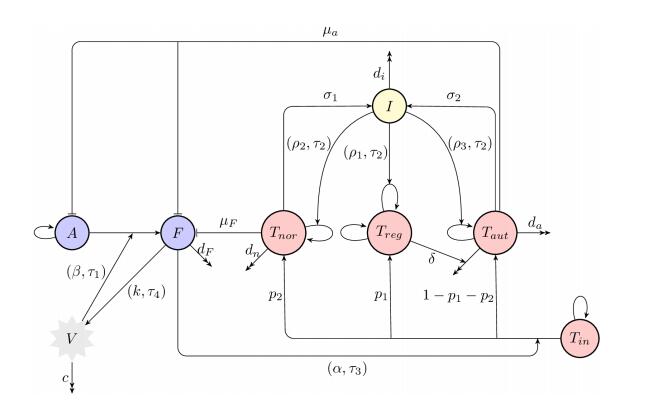
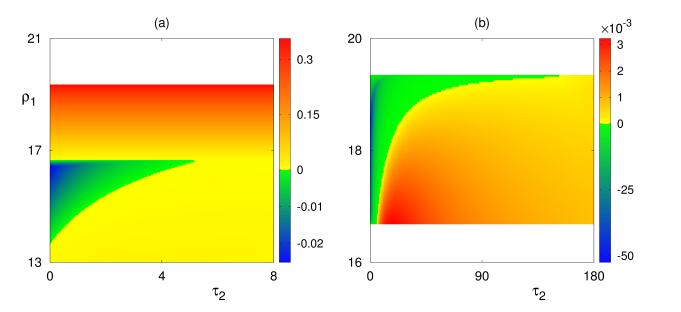
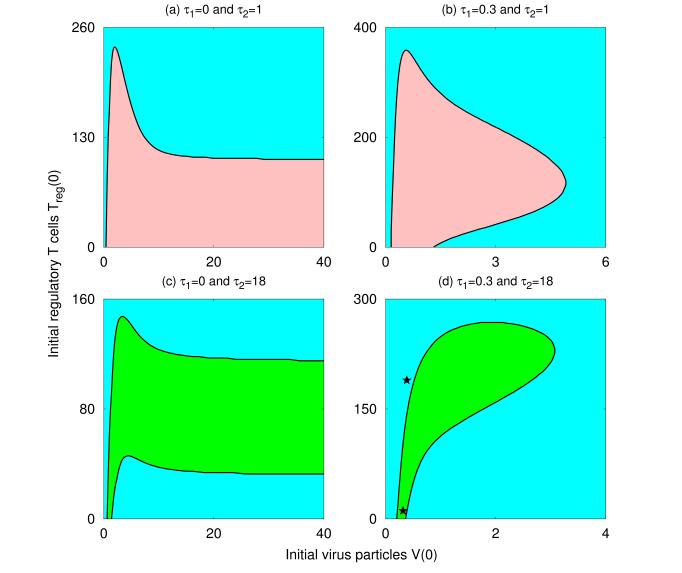
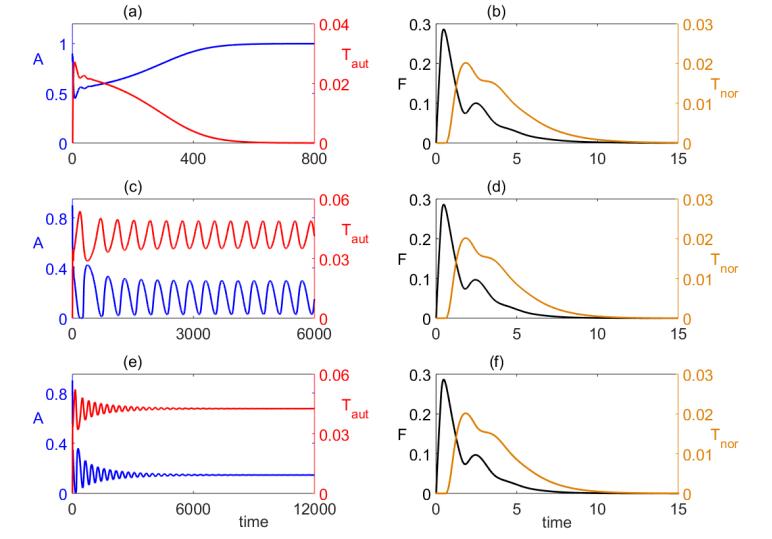
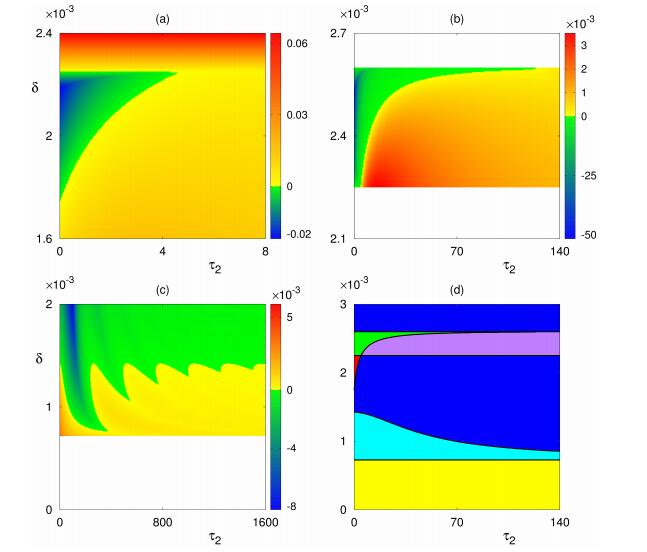
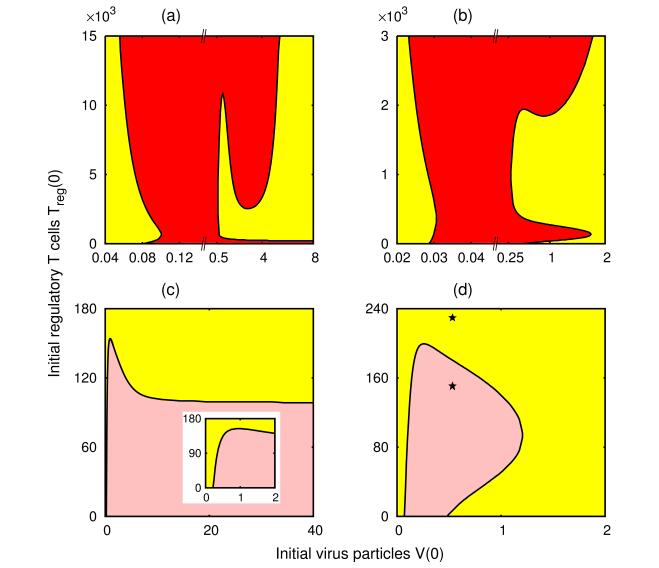
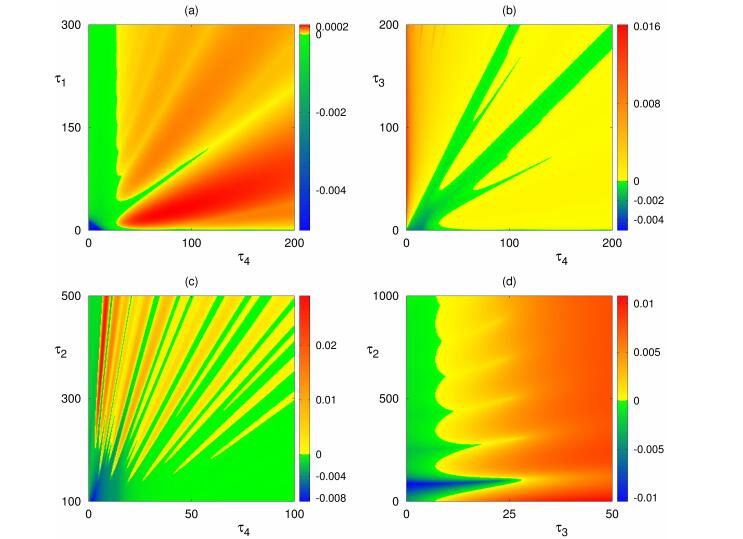
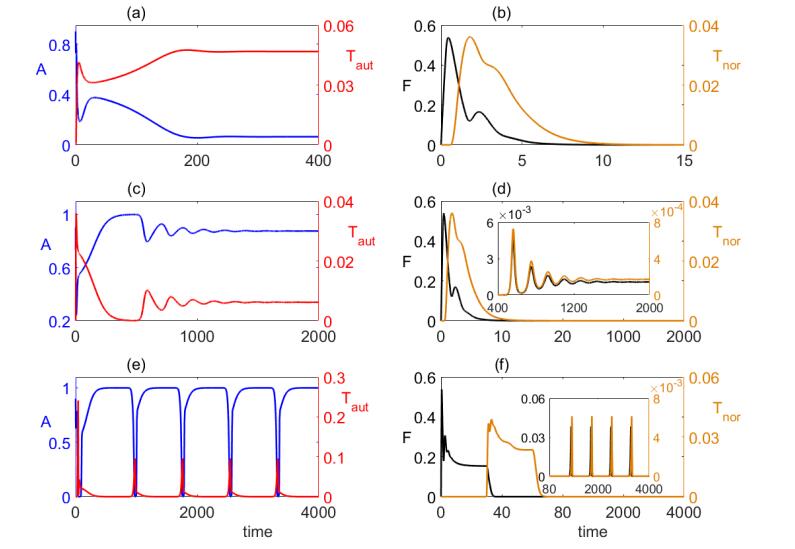


 DownLoad:
DownLoad: